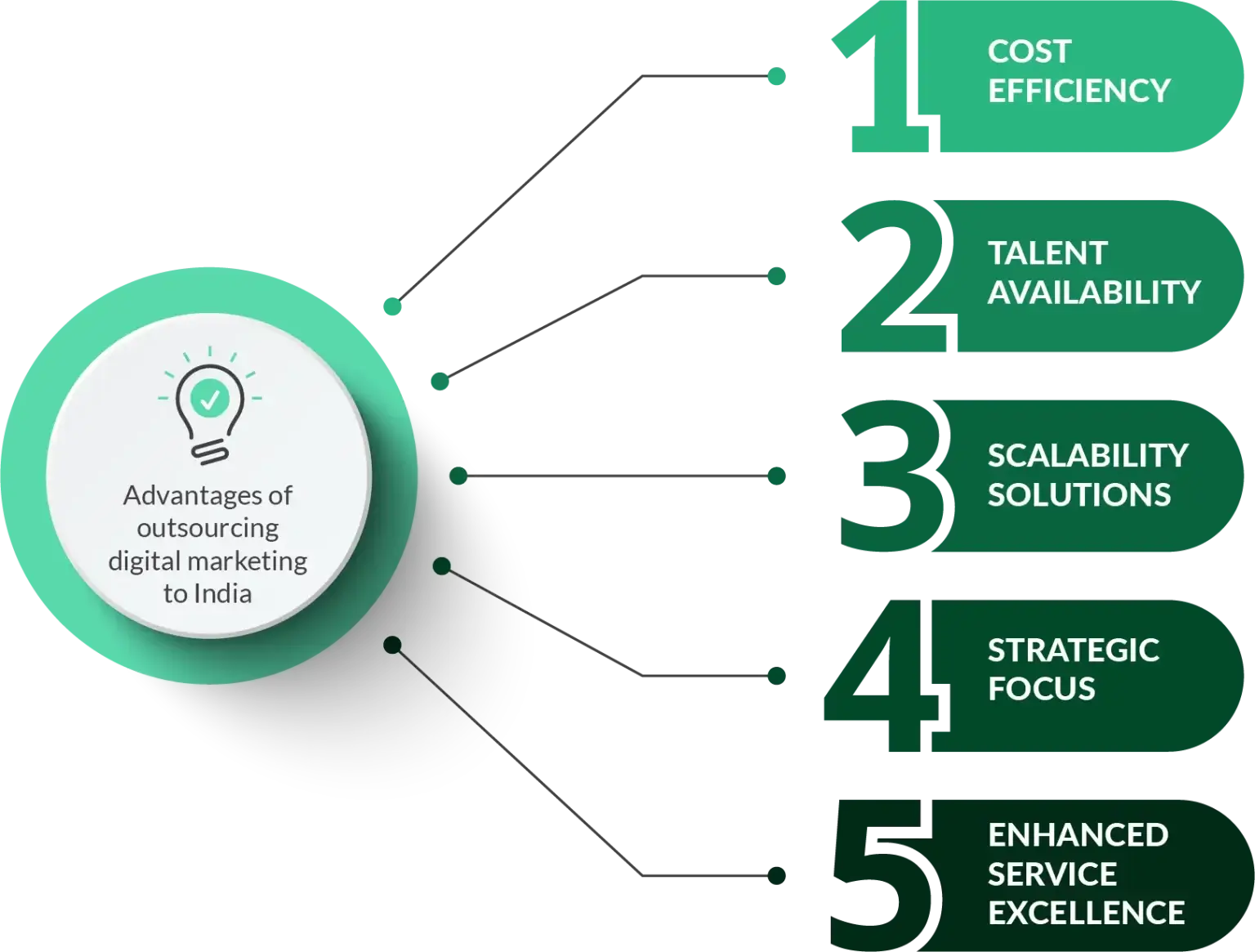Strong Marketing is imperative today. Marketing is critical to build a strong brand equity and market traction. Digital Marketing is the most effective way to market your product or service and it is the most effective way to reach your target audience with lowest cost and time. Digital marketing helps in building a brand by creating unparallel awareness. It also helps develop strong customer and revenue traction by generating leads of the highest quality. The biggest advantage today is that through the Internet, a company can reach anyone, anywhere, and at any time. No geographical or time constraints.
No wonder, the need for digital marketing is increasing every day. The spectrum of digital marketing includes many skills such as SEO, Social Media, Copywriting, Web development, Content Writing and so on and most of the countries are now facing a shortage of the right skill sets. This might have a serious impact on their businesses. The solution is outsourcing digital marketing services.
Now, the question is: can these services be outsourced? Yes,
Which is the best possible option?
And the answer is India!
Why India?
- Offshoring provides a fast-growing and increasingly important opportunity for MNCs. It is mainly derived from India’s largest asset – its people. India is the largest English-speaking nation in the world with the second largest pool of scientists and engineers (second to the US).
- Companies can realize significant cost savings by utilizing the highly qualified talent pool at attractive rates and translate this into an important competitive advantage.
- India already has a matured delivery model because IT and Engineering companies are leveraging the outsourcing model with India for decades.
Therefore, India is one of the most sought-after offshore destinations for digital marketing services as well. This is evident from the fact that according to the 2019 A.T. Kearney Global Services Location Index and Tholons Top 50 Digital Nations, India continues to be the most popular destination for outsourcing.
Why Outsourcing Digital Marketing to India Is Beneficial for Your Company?
Outsourcing digital marketing to India is not only a cost-effective solution, but businesses can access top-notch expertise without hefty expenses. It allows efficient resource allocation, ensuring higher ROI and facilitating growth in other areas. Whether it’s SEO, social media marketing, or email marketing, outsourcing to India is a wise move for businesses of all sizes in today’s digital environment.
India offers advantages for businesses that outsource their digital marketing. Here are some benefits:

A. Cost Efficiency
This is due to the massive gap between personnel costs in India and that of developed countries. Companies can get a team consisting of It helps companies get the team, including marketing strategists, with a broad skill set at a fraction of the cost.
B. Talent Availability
India is the largest English-speaking country in the world with millions of graduates are coming up to join as qualified and upgraded workforce every year.
C. Scalability Solutions
India has a sizable pool of knowledgeable digital marketers, giving organizations the flexibility to take on additional clients or roll out new marketing initiatives. Because there are skilled resources readily available, scaling up or down as necessary becomes simpler.
D. Strategic Focus
By outsourcing their digital marketing, companies can concentrate on what they do best while leaving the marketing work to the pros. This frees up time and resources that could be used to expand the company in other directions.
E. Enhanced Service Excellence
Indian digital marketing companies possess extensive experience in developing effective marketing strategies for diverse industries. Their expertise ensures the delivery of high-quality services and tailored digital marketing approaches to meet specific project requirements.
Indian digital marketing companies can bring the most value to your digital marketing initiatives thanks to their results-driven attitude and tried-and-true methodology. They can provide the best outcomes for your project, whether it calls for SEO, SMO, SMM, ORM, or PPC, through strategic positioning, testing, and innovation.
Cost arbitrage and availability of qualified people that are up to date with technology and the latest trends will allow customers to focus on their core, and ensure maximum return on investments (ROI).
Tanvi Behere
tanvi@tillitclicks.com


